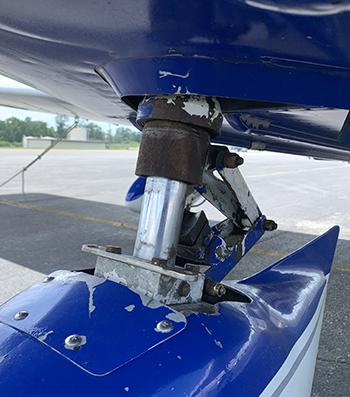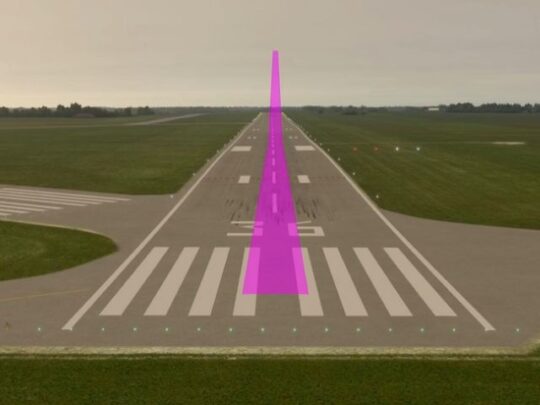Subscriber question:
"How do I know if my nose wheel strut needs to be serviced?" —Arlo K.
Dean:
 “Air-oil struts, which are also called shock struts, must be maintained with the proper amount of both air and oil. The ‘air’ is usually nitrogen because it has no moisture in it and the oil is almost always red 5606 aviation hydraulic fluid.
“Air-oil struts, which are also called shock struts, must be maintained with the proper amount of both air and oil. The ‘air’ is usually nitrogen because it has no moisture in it and the oil is almost always red 5606 aviation hydraulic fluid.
It’s important on preflight to check this, and a good start is to grab the prop on both sides near the hub and pull down to ‘bob’ the nose up and down a bit. This is because a landing that was beautifully light on the nosewheel might not compress it enough to see if it needs more nitrogen—and this test is also useful to check the oil part of the strut. Always ensure the mags are off before touching the prop.
If your strut extension is too low causing the prop to be too close to the ground, you need more nitrogen. The nitrogen charge serves as the ‘spring’ that holds up the nose.
Independently of the strut extension level, if it easily springs up and down, it might mean more fluid is needed. Struts typically have a small orifice inside, through which the fluid flows as the strut moves up and down. If the fluid level is too low, the dampening action is minimized and the strut becomes too springy. With the proper amount of both fluid and nitrogen in a strut, it should move smoothly, but with an appropriate amount of dampening action.
If in doubt, check with your favorite A&P and be sure your struts are serviced properly. Strut servicing is an often-overlooked item, but it really is important for optimal takeoff, landing, and taxi performance.”
Did your primary flight training do a thorough job teaching aircraft systems?

